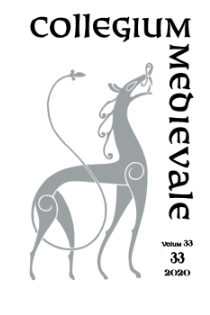Sammendrag
Prior to 536-550 ce eleven Early Nordic runic inscriptions mention the irilar, a warrior and an autonomous follower of a sufficiently wealthy and powerful leader, who was probably a hall owner. Beowulf, composed after 536 with roots in the 6th-7th century, is known to us in an Anglo-Saxon version that deals with eorl 55 times. In the poem, we learn more about an eorl's role and identity. Beowulf and his retinue are eorls. In the beginning of the 9th century, the Saxon poem about the life of Jesus, Hêliand, mentions erl 93 times because his followers, like Beowulf's, are erls. In Hêliand, erls as a group and social institution is a wider historical phenomenon than in Beowulf. This chronological series of written sources brings the prehistoric irilar safely to the historic erl. Thus, based on three case studies one may describe how the identity, role and status of the Scandinavian and in all probability even Saxon pre-536, irilar concept changed during a 400-year period.

Dette verket er lisensiert under Creative Commons Attribution-ShareAlike 4.0 International License.
Opphavsrett 2020 Frands Herschend

